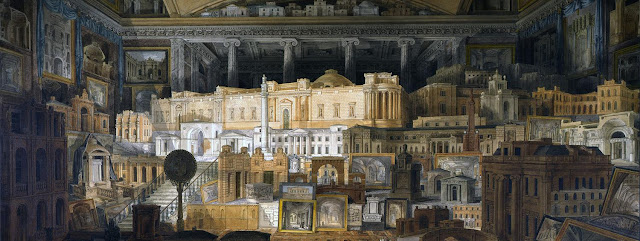MoDA KATAGAMI PROJECT: MAKING THE TEXTILES FOR A COSTUME
Caroline is one of four artist/researchers who was selected by MoDA (Museum of Domestic Design and Architecture) to participate in their Arts Council England funded project 'Katagami in practice: Japanese stencils in the art school'. The project started in November 2016 and is now entering a very productive phase of developing and making the textiles for a costumed performance called 'Waves'.
I've allocated the majority of my time to this stage of the project as it is involving a laborious and careful process of hand printing the paper textiles for the costume using a hand cut stencil and printing inks. After experimenting with different inks and brushes, Speedball screen printing ink and sponges gave the best results.
I've been using pins to attach the stencils to the paper, using the holes made in the paper to then match up the stencil for repeat pattern printing so that the final printed surface pattern adheres to a grid structure. The paper katagami stencils in the MoDA collection all have tiny holes at each of the four corners of the stencils. One of the participants within the MoDA project had shared a video with the other participants showing the traditional process involved in making the stencil and printing their patterns onto fabric. The tiny holes within the katagami stencils are used for pinning the stencil to the fabric and acted as a guide for lining up the patterns to create the final length of print.
The grid structure can be seen within the finished length of printed paper as well as the wave pattern that is reminiscent of a Briget Riley op-art pattern.
Once the printed paper is dry, I then begin the folding process, using the print as a guide for where I have to fold the paper. Again, this is a very time consuming process as to create the final folded textiles I have to fold the paper multiple times along the horizontal, vertically and diagonally. This usually takes about an hour to create the crease fold pattern that is needed to make the folded textile and requires a lot of careful precision.
The model starts with folding the paper and forming waterbomb folds along each pleated row and a process of unfolding and refolding to form multiple waterbomb folds within a single length of paper.
Folding is a very technical process, but the technicalities don't end there: because the paper textiles I'm using have to retain their folds for a filmed costumed performance and an exhibition in 2018, I have to ensure that I am making textiles that will be durable enough for both of these scenarios. I have found that varnishing the folded paper does not work, as it makes the final origami model too rigid and I wish to retain the elasticity of the paper to create a dynamic textile. I was aware that some people wet fold their models for exhibition and read this very informative article by origami artist Robert J. Laing: http://www.langorigami.com/article/paper
Rather than wet folding my textiles, I compressed the completed folded textile and then gently steamed it over a pot of boiling water to resize the paper. This causes the folded textiles to visibly contract and once it has dried, the final size of the paper is a quarter of the size it was before folding and steaming takes place.
I am using this process to make folded textiles for the sleeves and top half of the costume that will hopefully create a very dynamic and sculptural form that the movement artist will be able to manipulate and transform into a series of interesting patterns and shapes around her body.












Comments
Post a Comment